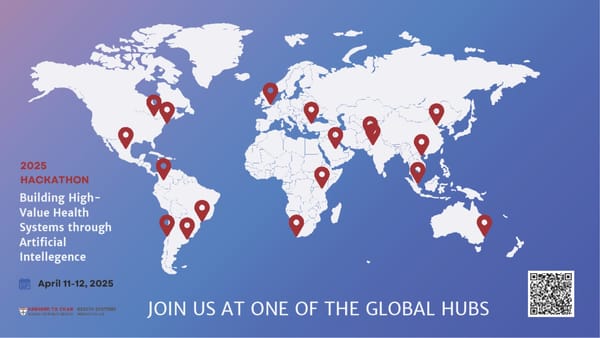Shifting Foundations: Change Management in Real Estate Marketing During Vision 2030
Discover how change management is reshaping real estate marketing in Saudi Arabia during Vision 2030. Explore key shifts, challenges, and success stories from brands like Key Concept and Hamat.sa.

The real estate sector in Saudi Arabia is no longer just about building properties — it’s about building purpose. With Vision 2030 driving a complete transformation of urban development, hospitality, culture, and sustainability, real estate marketing has become a completely different game. To keep up, real estate brands and marketers are being forced to adapt, evolve, and in many cases — completely reinvent themselves. This is where change management steps in.
A New Era of Real Estate in Saudi Arabia
With giga-projects like NEOM, Diriyah Gate, Qiddiya, and the Red Sea, Saudi Arabia is positioning itself not only as a global hub but also as a beacon of innovation in real estate. These developments aren't just massive in size — they're ambitious in vision. They aim to redefine how people live, work, and interact with space.
Marketing in this new landscape isn’t just about showcasing floorplans or launching campaigns. It’s about storytelling at scale, experience design, and community creation. That requires an entirely new mindset — and a structured approach to managing that shift.
Why Change Management Matters in Marketing
At its core, change management in marketing is about leading people through transformation — both internally (your team) and externally (your audience). Real estate developers are no longer only selling units. They're selling lifestyles, legacies, and visions of the future. Marketers must align with that vision, often navigating internal resistance, legacy systems, and unclear roadmaps along the way.
Marketing teams must now wear multiple hats — strategists, technologists, brand architects, and cultural translators.
The 4 Big Shifts Reshaping Real Estate Marketing
To navigate change, marketers must understand the key shifts happening under Vision 2030:
1. Audience Shift
The traditional audience of investors and government stakeholders has expanded. Now, there's a strong emphasis on end users — residents, visitors, and global citizens. Campaigns must speak directly to their aspirations and values.
2. Message Shift
Old messaging focused on specs and features. New messaging is about purpose, sustainability, and identity. It’s not just about “what” is being built — but “why” it matters.
3. Channel Shift
Marketing channels have shifted from static brochures and events to immersive digital journeys — including VR walkthroughs, influencer-led site tours, lifestyle storytelling, and dynamic content across social media and YouTube.
4. Team Shift
The modern real estate marketing team is cross-functional: blending urban insight, digital fluency, cultural context, and agile execution. This often means hiring new skillsets or retraining existing ones.
Internal Challenges: Resistance, Silos, and Speed
Implementing change is never easy. Marketers face resistance from leadership anchored in traditional methods, as well as slow adoption of digital tools. There’s often a disconnect between the boldness of the Vision and the conservatism of execution. Teams struggle with real-time responsiveness, budget shifts, and brand alignment — especially when developments span years.
This is where proactive change management frameworks help — by aligning stakeholders, introducing structured training, and establishing new rituals of collaboration.
Success Stories: Brands Embracing the Shift
Some brands have already stepped up, embedding change management into their DNA:
- Key Concept is a bold Saudi real estate design firm that’s challenging traditional norms. Their developments are defined not just by space, but by cultural narrative and intentionality. As their marketing partners, we've seen how aligning branding with architectural philosophy transforms the entire value proposition. Marketing for Key Concept isn’t just a department — it’s a continuation of the design thinking itself.
- Hamat.sa is reimagining the role of malls in the Kingdom. Their new projects — particularly in Makkah, one of the most sacred and complex urban environments in the world — reflect a deep understanding of how modern retail spaces can be meaningful, convenient, and culturally aligned. Together, we’ve developed emotionally resonant, localized marketing strategies that honor the city’s heritage while embracing a progressive future.
- ROSHN’s focus on human-centric community development has redefined how residential projects are positioned in the public eye — moving from generic advertising to story-driven branding.
- Diriyah Gate combines modernity with historical depth, creating a brand rooted in authenticity — where marketing content often feels like a documentary, not a sales pitch.
These success stories prove one thing: when real estate brands embrace change, marketing becomes a catalyst, not a cost.
What Marketers Must Do Next
To lead through change in this era, real estate marketers must:
- Adopt change frameworks: Train teams, restructure workflows, and set a culture of experimentation.
- Invest in content ecosystems: Don’t rely on one-time campaigns. Build long-term storytelling strategies.
- Collaborate deeply with design and development teams: Marketing must start at the blueprint, not at handover.
- Upskill consistently: Embrace AI, data analytics, brand architecture, and cultural fluency.
Final Thought: Marketing is Now Urban Strategy
As Saudi Arabia transforms under Vision 2030, marketing isn’t just here to promote. It’s here to participate in the building of a new national narrative. Real estate is no longer about land — it’s about legacy. And marketing is how that legacy is communicated, understood, and embraced.
If you're in real estate marketing today, your job isn't to sell a building.
Your job is to shape the story of a nation.





